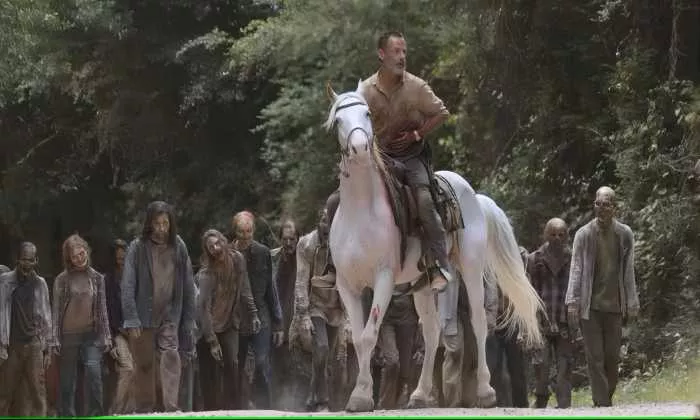The Anatomy of Walkers: Why Are They Skinny in “The Walking Dead”?
Narrative Considerations:
From a narrative perspective, the appearance of walkers as skinny and emaciated serves several purposes within the world of “The Walking Dead.”
- Decay and Decomposition: One of the central themes of “The Walking Dead” is the passage of time and the gradual decay of both the living and the dead. As corpses reanimate and become walkers, they continue to deteriorate over time, resulting in a skeletal appearance. The skinny, emaciated appearance of walkers reflects the ongoing process of decay and decomposition, underscoring the grim reality of the post-apocalyptic world.
- Scarcity of Resources: Another factor contributing to the skinny appearance of walkers is the scarcity of resources in the world of “The Walking Dead.” With food and other essentials in short supply, both the living and the undead struggle to sustain themselves. Walkers, deprived of regular meals, gradually waste away, resulting in a skeletal appearance. This scarcity of resources adds to the atmosphere of desperation and survival that permeates the series, emphasizing the brutal realities of life in a post-apocalyptic wasteland.
- Symbolism of Death: The skinny, emaciated appearance of walkers serves as a visual representation of death and decay. By portraying the undead as gaunt and skeletal, “The Walking Dead” reinforces the themes of mortality and impermanence that pervade the series. The sight of emaciated walkers serves as a constant reminder of the fragility of life and the inevitability of death in the world of the apocalypse.
Practical Considerations:
In addition to narrative considerations, there are practical reasons behind the decision to portray walkers as skinny and emaciated in “The Walking Dead.”
- Makeup and Special Effects: Creating realistic-looking walkers requires careful attention to detail and skillful application of makeup and special effects. The skinny, emaciated appearance of walkers allows makeup artists and special effects teams to create convincing prosthetics and visual effects that enhance the realism of the undead. By emphasizing skeletal features and gaunt faces, artists can convey the sense of decay and deterioration that defines the world of “The Walking Dead.”
- Mobility and Agility: From a practical standpoint, portraying walkers as skinny and emaciated allows for greater mobility and agility during filming. Emaciated walkers are lighter and more agile than their living counterparts, making it easier for actors to portray them convincingly in scenes requiring movement and physical exertion. This enhanced mobility enhances the sense of threat and danger posed by the undead, adding to the tension and suspense of the series.
- Visual Cohesion: Finally, portraying all walkers as skinny and emaciated helps to maintain visual cohesion and consistency throughout the series. By adhering to a standardized appearance for the undead, “The Walking Dead” ensures that viewers can easily identify and distinguish walkers from other characters. This visual consistency contributes to the immersive experience of the series, allowing viewers to suspend their disbelief and immerse themselves fully in the world of the apocalypse.
Conclusion:
In conclusion, the skinny appearance of walkers in “The Walking Dead” serves both narrative and practical purposes within the series. From a narrative standpoint, the emaciated appearance of walkers reflects themes of decay, scarcity, and mortality, reinforcing the grim realities of life in a post-apocalyptic world. From a practical standpoint, portraying walkers as skinny and emaciated allows for realistic makeup and special effects, enhanced mobility and agility, and visual cohesion throughout the series. Together, these factors contribute to the immersive and compelling portrayal of the undead in “The Walking Dead,” adding to the tension, suspense, and horror of the apocalypse.
https://www.rnada.com/archives/12514
https://www.rnada.com/archives/12506
https://www.rnada.com/archives/12502

